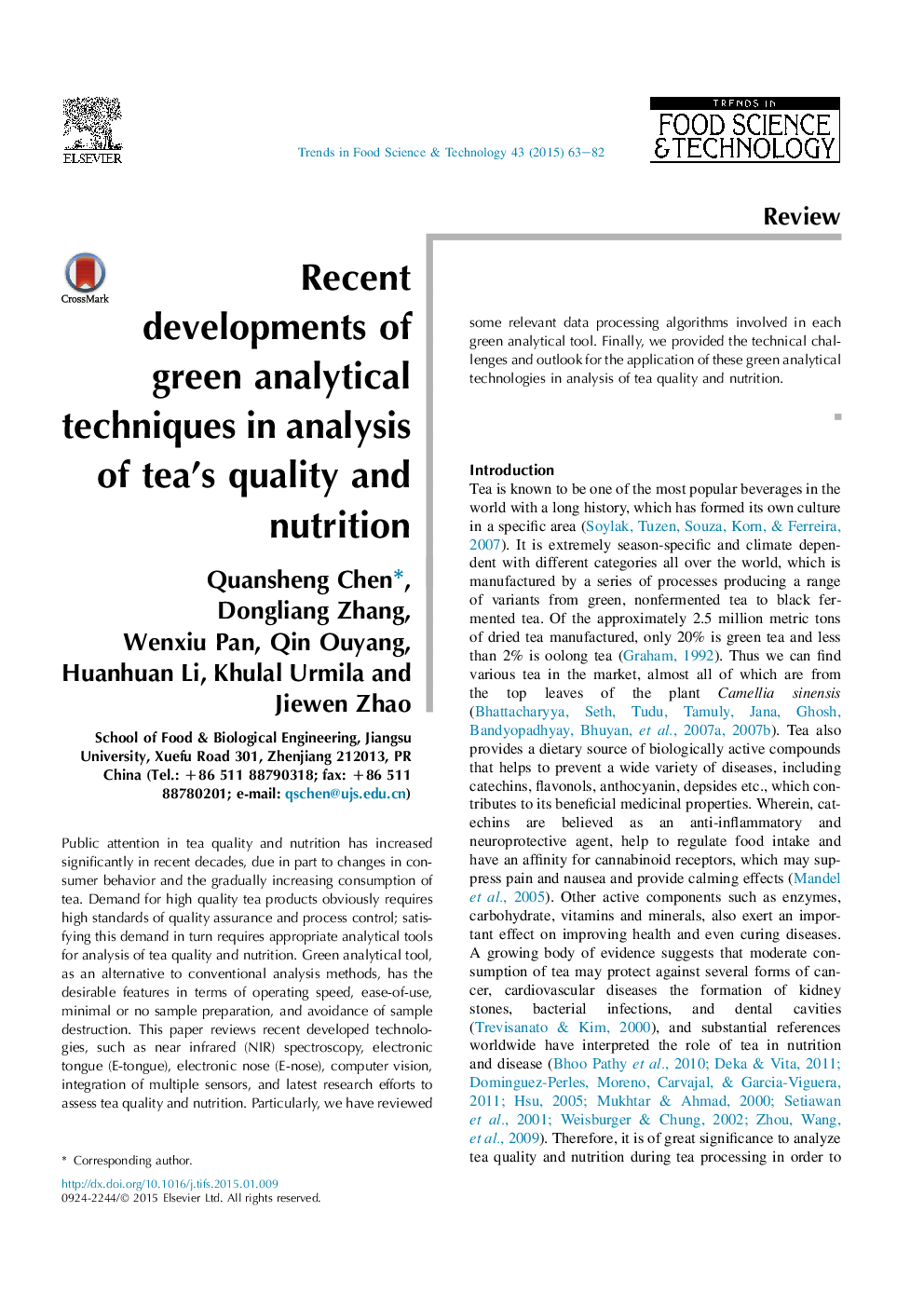| Article ID | Journal | Published Year | Pages | File Type |
|---|---|---|---|---|
| 2099783 | Trends in Food Science & Technology | 2015 | 20 Pages |
•Conventional analytical methods to tea quality and nutrition are reviewed.•Applications of green analytical tools to tea quality and nutrition are reviewed.•Strengths of limitations of green analytical tools in tea are discussed.•Related data processing algorithms for green analytical tools are discussed.
Public attention in tea quality and nutrition has increased significantly in recent decades, due in part to changes in consumer behavior and the gradually increasing consumption of tea. Demand for high quality tea products obviously requires high standards of quality assurance and process control; satisfying this demand in turn requires appropriate analytical tools for analysis of tea quality and nutrition. Green analytical tool, as an alternative to conventional analysis methods, has the desirable features in terms of operating speed, ease-of-use, minimal or no sample preparation, and avoidance of sample destruction. This paper reviews recent developed technologies, such as near infrared (NIR) spectroscopy, electronic tongue (E-tongue), electronic nose (E-nose), computer vision, integration of multiple sensors, and latest research efforts to assess tea quality and nutrition. Particularly, we have reviewed some relevant data processing algorithms involved in each green analytical tool. Finally, we provided the technical challenges and outlook for the application of these green analytical technologies in analysis of tea quality and nutrition.
